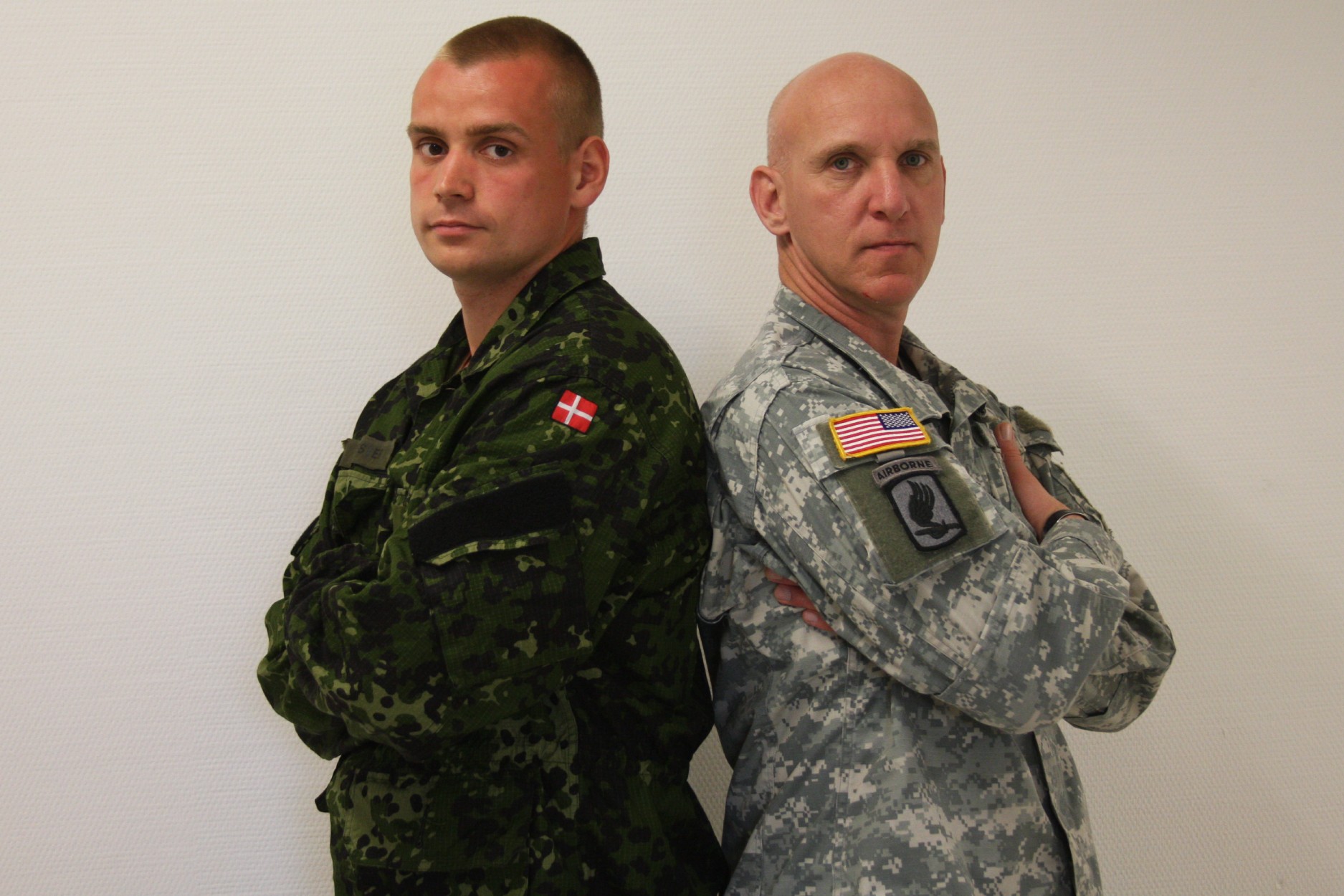
SCHWEINFURT, Germany -- The apple doesn't fall far from the tree for this cross-military father-son duo. William Groene is a master sergeant in the U.S. Army. His stepson, Michel Vester, is a Danish cadet currently enrolled at the Royal Danish Army Officers Academy at the Frederiksborg Palace in Copenhagen.
"I met his mother back in 1999 and we got married," said Groene, the rear detachment noncommissioned officer in charge of 1st Squadron, 91st Cavalry Regiment (Airborne). "The rest is pretty much history."
Vester, who works in logistics, is of Danish citizenship. Dual citizenship is prohibited in Denmark. He doesn't see any differences between him and his stepfather.
"We both like working in the Army doing manual work and working with Soldiers," Vester said. "I don't think there are any big differences."
"He's a bit more regimented and focused," Groene said of his stepson. Vester chuckled at the suggestion that his step-father, who has over two decades of experience with the U.S. Army, is any less professional. "He's a lot smarter, stronger and better looking," Groene said with a smile.
The two were questioned about the differences between the U.S. and Danish Armies. Each agreed that there was something to be learned from his cross-cultural counterparts.
"In the combat environment I think there is, to a degree," Groene said about what the Danes have to offer. "I think it's their level of interaction. I think this is a lesson that the American Army is picking up on as well as far as interaction downrange in combat operations, where they tend to interact with the locals more."
Vester admired the internal interoperability within the U.S. Army.
"We sometimes have a problem with the different units interacting," Vester said, adding that Danish units are isolated according to region in Denmark. "They have some maneuvers together but it's definitely not the same as the American military."
Vester reunited with his stepfather when he and eleven other Danish cadets recently visited the Schweinfurt garrison for a week as part of a training exercise for the cadets.
Six months ago, Vester, curious about his step-father's line of work, initiated the exchange.
"I wanted to see what the U.S. Army was doing so I asked him if it was possible," Vester said of his step-father.
Later, with assistance from Michael Cormier, the 172 Infantry Brigade partnership office, Master Sgt. Groene orchestrated a week of interoperability training with 12 Danish cadets from the Royal Danish Army Officers Academy.
"The purpose was to introduce interoperability training and see how another Army operates," Cormier said. "It was about getting to know another army, for the Danish and the Americans."
The twelve cadets were matched up with respective officers from the 172nd Support Battalion, 9th Engineer Battalion, 1st Battalion, 77th Field Artillery, and the Schweinfurt garrison Judge Advocate General's office. The cadets participated in combatives training, trained among tank units, fired weapons at a range and competed in an international soccer tournament.
Lt. Michel Vester and his 11 comrades returned to Copenhagen last week. He still has one more year at the academy. Danish cadets are required to serve an enlisted commitment prior to enrolling in the academy. Fifty to 60 percent of Danish cadets, incidentally, have had one or more combat missions before entering the Danish Army Academy, he said.
Related Links:
U.S. Army Garrison Schweinfurt on Flickr

Social Sharing